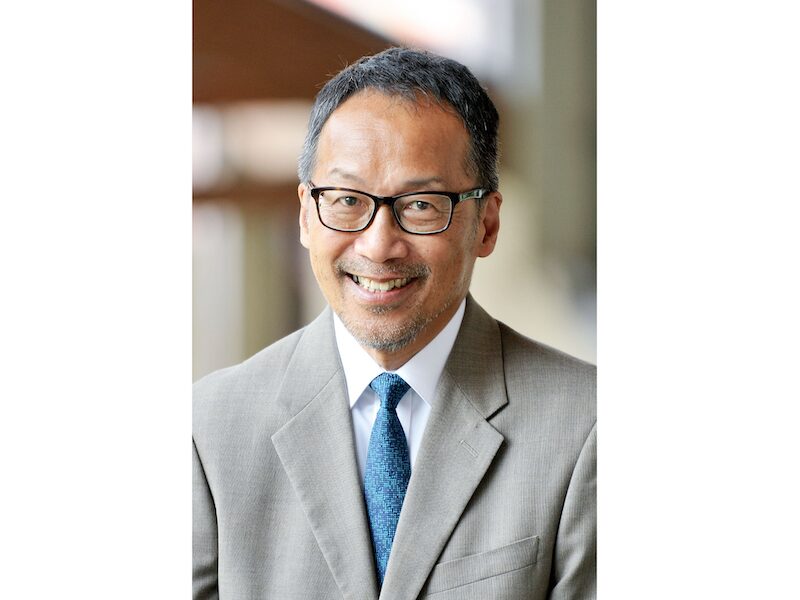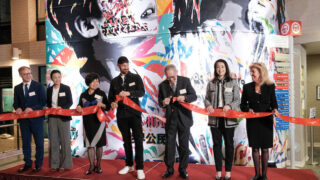A new chapter is beginning for the Canadian International School of Hong Kong (CDNIS) as it expands its presence in upcoming lifestyle mall The Southside in Wong Chuk Hang. The generous early learning space is set to open in time for the next academic year. We chat with the school about this slice of CDNIS news and the kind of play-based learning that parents can expect at the new facility.
The location in new mall The Southside will be home to the school’s popular bilingual half-day Early Years 1 (EY1) programme for the three-year-olds. There will also be a new addition: a first-of-it’s-kind bilingual Nursery programme for two-year-olds. Both programmes will start from the 2024.25 year.
Overseeing the school’s new facility in The Southside is DR WIL CHAN, Senior Director for Special Projects at CDNIS. Wil was born and raised in the San Fransisco Bay Area and has served as principal of local and international schools in both the US and Hong Kong. And while he’s seen the inside of many schools in his time, it’s fair to say he’s super excited about this one.
“It’s a perfect space,” says Wil. “Not only is it just down the hill from the main campus, next to the Wong Chuk Hang MTR station, but it’s also huge. It’s 14,000 square feet, in fact, which is bigger than the current CDNIS space. And having so much room allows us not only to design a facility specifically for EY1 but also introduce the new Nursery offering.”
Work under way in Wong Chuk Hang
Construction work on phase one started in September 2023. Our chat comes just after Wil has done a site visit to discuss phases two and three of the build, which will begin soon. But if the plans are anything to go by, it will be a phenomenal learning space by the time it’s finished.
“There will be eight classrooms at the Nursery – four for the two-year olds, and four for the three-year-olds. Each will have around 15 children, led by a teacher and an educational assistant.”
Each classroom will also have openings to another classroom pair – what Wil refers to as a dyad community – to allow for a flexible and interactive teaching environment. “This will let teachers mix and match, group and regroup based on what’s needed – because they know the kids best. So, rather than being overly restricted by a specific daily schedule and timetable, it will be a dynamic learning environment.”
Language learning
The Nursery and EY1 programmes will allow students to learn two languages through CDNIS’s adoption of a unique dual language platform. This will include an unaccompanied bilingual programme for two-year-olds.
“Previously, our early years language learning has worked on a model where the focus is on English one day and Chinese the next,” says Wil. “So, children have always been aware that they are currently in a Chinese lesson. We want to create a community where the language becomes a way of life instead, where children learn organically because they are in the midst of it.
“Having this rich dual language ethos in everything they do and in every activity they engage in – not just academics – allows for continual access to robust language learning, rather than only on one day out of two.”
Wil says he’s also keen to offer support for non-bilingual families in the form of on-site extracurricular sessions before and after school or on weekends. “If a parent isn’t a Chinese speaker or an English speaker, they might wonder how they can best support their child’s bilingual learning. We want families to be able to supplement their language involvement – and in a fun way. It might be Lego playing in Putonghua, for example, or art lessons or story telling in Putonghua or English.”
Play-based learning in The Southside
Aside from classrooms, the large floor area in The Southside means there’s also plenty of open space, with different zones for different kinds of play. “There will be a dedicated atelier, for example, which is a studio where the kids can get creative with blocks and building,” says Wil. “The emphasis here will be on collaborative play, as it can be a richer experience for children to come together to make something. If they go on a field trip and see some interesting buildings, for example, they can then replicate those things collectively in the atelier – or it might be recreating Elsa’s ice palace from Frozen.”
Wil adds that he’s also keen to move away from the time constraints that are often in place in these spaces. “Normally, clean-up time comes around quickly and everything gets taken away. There’s no time for kids to enjoy what they’ve created. We want to leave their work in place for longer so they can be proud of it. When the parents come to pick them up, the children can explain their creations.”
There will also be a designated sensory zone. This is still in the planning stage, but it will include the likes of a sand play area, a climbing wall and other indoor play structures – “anything that supports core muscle development, which is critical for two- and three-year-olds,” says Wil. For this same reason, contoured flooring has been incorporated into the design of the play area. Kids will be able to roll, jump, climb and explore.
An arty collaboration
Another thing Wil is looking forward to is a collaboration with Japanese digital artists TeamLab, whose interactive art installations will feature on the walls of the new centre. “We’ll be the first school to bring TeamLab’s installations into a space. Their moveable walls will provide an amazing supplement to learning.”
Music will feature heavily, too, with another dedicated space and specialists in the area coming in to investigate music, movement and rhythm. “I’d even like to invite the children to bring in songs they hear at home, which we can play for each other. It’s not only fun but it demonstrates different cultural nuances. What’s more, it gives a sense of this being a blend of school and home.”
Next steps for CDNIS
Wil is currently busy recruiting staff for the launch in the second half of 2024. “I’m looking for people who are trained in early years education and know about developmental milestones. But they should also have a rich background in bilingual education. And the third key thing for me is having the right kind of demeanour to fit in what will be a warm, inviting and creative learning environment. All the staff will know all the kids, and be fully responsible for the welfare and benefit of each one. And every moment they have with every child will be a learning moment.”
This, says Wil, is the cultural essence of what CDNIS is trying to develop at its new play-based learning space in The Southside in Wong Chuk Hang. “It’s about creating a family. And when children and parents arrive on that very first day, they’re going to feel like they’re part of our family.
Applications for the CDNIS Early Years Programme are expected to open in April 2024, pending EDB approval. If you’re interested in the programme for your own child, fill in the Expression of Interest form at cdnis.edu.hk/academics/nursery-eng to stay up to date on the latest developments and information about the new location in The Southside.
Enjoyed reading about play-based learning at CDNIS? Find more articles in our Education & Enrichment section.
This article first appeared in the Winter 2023/2024 issue of Expat Living magazine. Subscribe now so you never miss an issue!










